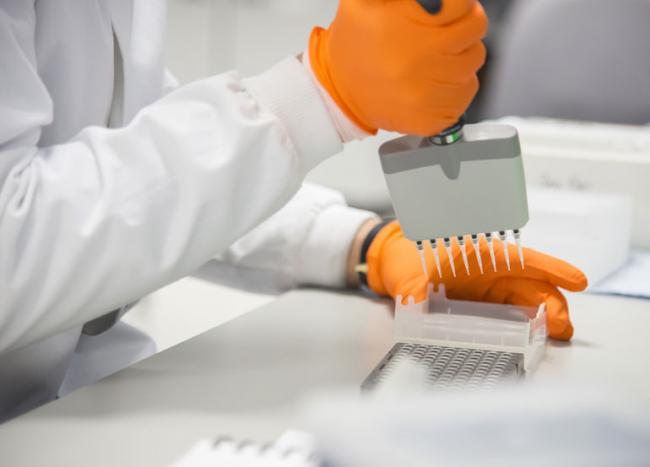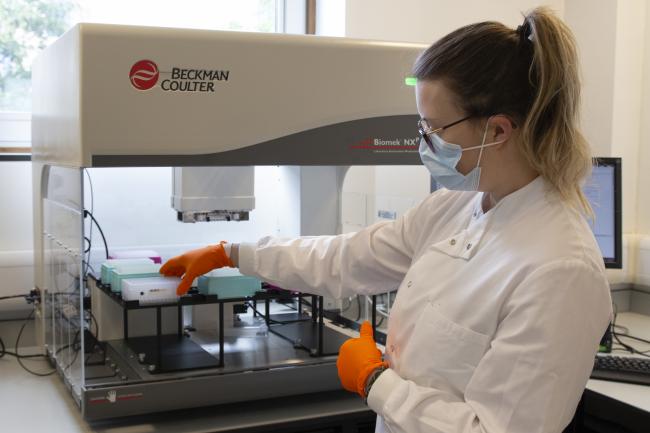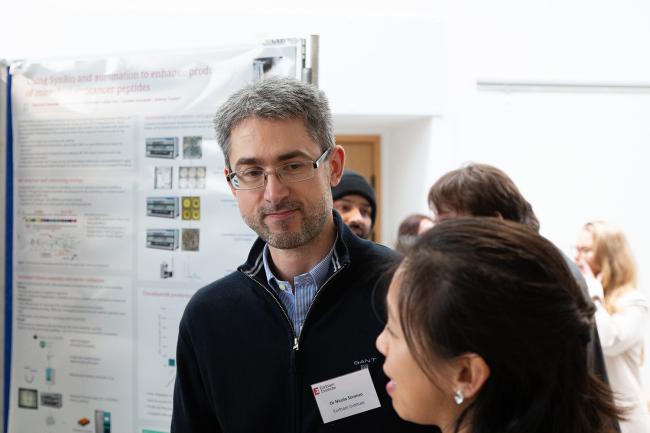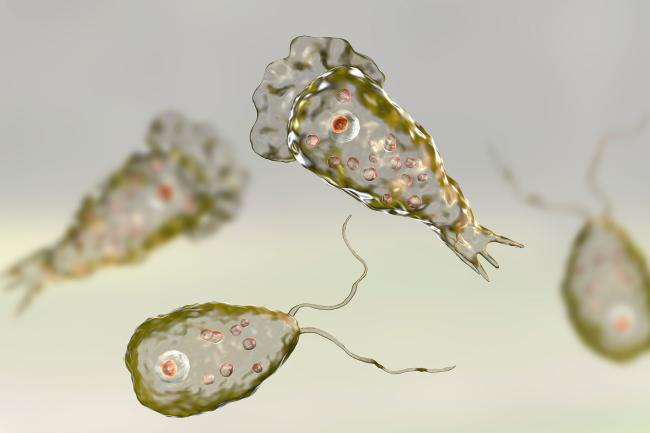
Finding effective treatments for SARS-CoV-2 means identifying key pathways to target, which is made all the more difficult when facing a completely new disease. Researchers in the Korcsmaros Group at EI are therefore applying their expertise in systems biology to tackle the problem from a holistic perspective.
ViralLink - published today in PloS Computational Biology - connects the dots, revealing the key interactions taking place within cells following infection with the SARS-CoV-2 virus. The only input required from the user is transcriptomic counts data, the ease of which enables rapid, multidisciplinary research.
Application of ViralLink to different transcriptomics datasets will aid discovery of how SARS-CoV-2 responses vary in different conditions such as cell types, organisms or patients.
A case study using the workflow highlighted ten key proteins involved in a wide range of functions in bronchial and tracheal cells. Among them were cell proliferation, apoptosis, cell adhesion, exocytosis and proinflammatory immune responses, mediated most notably by MAPK/ERK and PI3K/AKT signalling pathways.
Researchers worldwide are invited to use this resource, which is available on GitHub in an easily accessible Docker container, as a Python wrapper script or as customisable modular R and Python scripts.
“Collaborative and multidisciplinary science is especially important at present due to the urgency of COVID-19,” said first author Agatha Treveil, Research Scientist at EI. “This workflow aids that, by providing an easy-to-use tool to model the effect of viral proteins on an infected cell, which can be easily adapted as and when new data become available.”
Using publicly available information about which human proteins can interact with viral proteins, ViralLink predicts how an infected cell transmits signals from human protein-viral protein interactions through signalling pathways and transcription factors to ultimately change the expression of genes within the cell.
Specifically ViralLink employs a heat diffusion algorithm (TieDIE) alongside publicly available resources of molecular interactions (OmniPath and DoRothEA) to identify likely signalling and regulatory interactions within the infected cell. To help users to interpret the data, ViralLink also includes functional analysis and network topology analysis features.
Another useful aspect of the ViralLink workflow is that it integrates and connects data from disparate sources. Although tens of thousands of papers have been published during the course of the COVID-19 pandemic, many of them are often not connected. That poses a bottleneck for research to be translated to medical applications.
ViralLink is just one of a number of tools being developed by the Korcsmaros Group in the fight against COVID-19. As part of the international COVID-19 Disease Map effort, the team is working on a suite of network biology applications to understand the systemic effects of COVID-19, with a focus on the cytokine storm. Other tools are targeting drugs that perhaps already exist but are not yet being applied to COVID-19.
“This disease affects people in so many different ways,” says EI/QIB Group Leader Dr Tamas Korcsmaros. “The tools we’re developing will help researchers worldwide connect the dots so that identifying risk factors and treating the disease will become a lot more manageable. We’re providing the means to bring the work of the international scientific community together.”
The paper, 'ViralLink: An integrated workflow to investigate the effect of SARS-CoV-2 on intracellular signalling and regulatory pathways' is published in PLoS Computational Biology.










